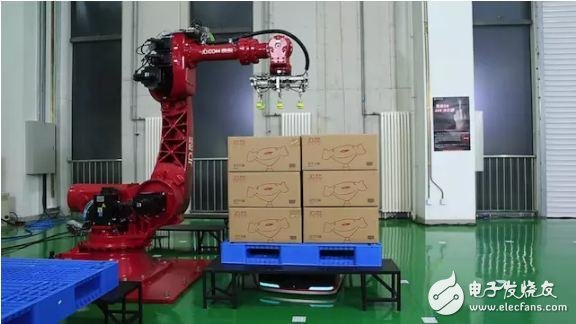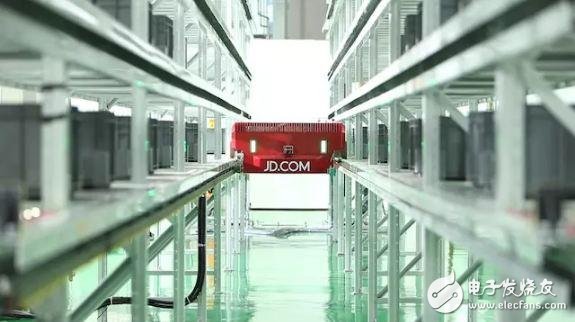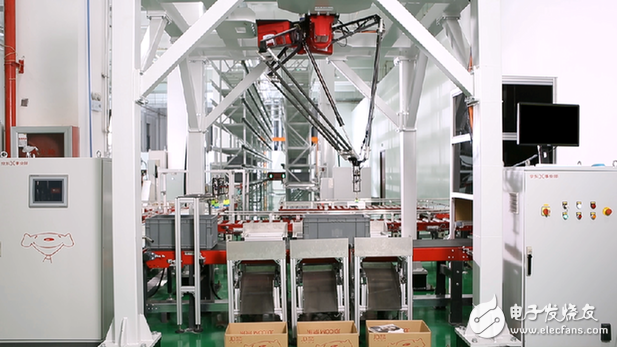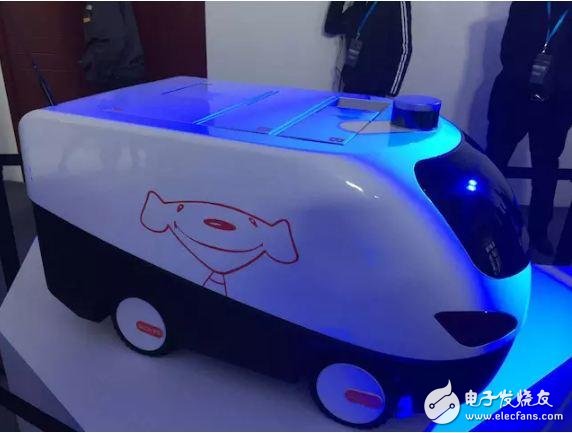One of the biggest challenges facing e-commerce every holiday shopping season is logistics. Originally, consumers always feel that delivery is too slow, and the shopping season needs to deal with orders that are several times or even dozens of times more than usual. How to quickly sort, pack, and distribute, in addition to hiring a large number of temporary workers, the operational efficiency and automation of the warehouse itself is also very important. Many e-commerce companies have tried to use robotic tube warehouses. For example, KIVA robots used by Amazon will bring the shelves where the order goods are placed to the employees. The employees just wait for the arrival of the robots, reach for the goods, pack them, and paste them. Label, an order is ready to enter the transportation link. Zara and other clothing brands in the United States have developed a Locus Bots. Locus will move the picking boxes to walk around the shelves. The staff passing by will scan the goods and put them in the box, let it move. Look for the next shelf. Recently, Jingdong opened its logistics laboratory near the Yizhuang headquarters in Beijing and introduced the latest developments in their use of robotic tube warehouses. In this unmanned warehouse, JD.com demonstrated the practical operation of handling robots, shelf shuttles, sorting robots, stacking robots, six-axis robots and unmanned forklifts. AGV handling robot (bottom right) and six-axis robot (left) At the bottom right of the above figure is the AGV handling robot, which is used to carry the cargo pallets with the goods placed. Similar to the operation principle of the KIVA robot, the AGV uses the QR code attached to the ground to navigate. The six-axis robot on the left uses the suction cup to re-load the goods. From the effect of the live display, the speed of the stack can reach one per second. Qin Hengle, an unmanned warehouse project engineer, introduced that when the robot is loading goods, one layer needs to be placed on one floor, and which side is required to be upwards is controlled by an algorithm. The background will be based on the length and width of the goods entered in advance, the type of goods, Store data such as rules and automatically calculate the way the robot is placed. In the small sorting process, the cooperation of the shelf shuttle and the sorting robot is required. Shelf shuttle, the shelves on both sides are the boxes with small items First, the shelf shuttle removes the cargo box containing the goods from the two rows of shelves and puts the conveyor belt. Each container will pass through the conveyor belt and enter the sorting process. Sorting robot Before the six-axis robot is sorted, the goods will be advanced to the "black box" with a built-in camera. This black box is used to identify the goods and serve as an inspection. Next, the sorting robot takes the goods out of the container and divides them into small packages. This Delta robot can sort 3,600 sorts per hour. In fact, identifying goods is the hardest part. At present, the laboratory only uses hundreds of kinds of commodities to conduct experiments, train artificial intelligence, and learn the products with different postures. There are tens of millions of commodities in Jingdong. The number of so-called artificial intelligence needs to be learned is quite large. According to Xiao Jun, head of the Jingdong X business unit, in order to train this algorithm, they have built standard operating process stations in 230 warehouses in Jingdong. But from the perspective of several robots currently on display, the real test is not how robots can do, or how fast they can do, but how to schedule and schedule robots in a warehouse to achieve maximum efficiency. When the machine is not smart enough, perhaps letting the robot help people improve efficiency is the most effective way. As for the use of image recognition and machine learning methods to train artificial intelligence, automatically identify each item, it still sounds far away. Using a unified barcode to identify problems that can be solved seems to be made more complicated. Also on display were the unmanned vehicles and drones that had been announced earlier. The top of the unmanned vehicle with the numbers 1-6 is the storage bin. In theory, the unmanned car can carry multiple orders at a time. According to the person in charge of the Jingdong unmanned vehicle project, the application scenarios of the future unmanned vehicles are mainly in the office buildings, residential areas and office parks, and transport daily small items. In the early days of operation, unmanned vehicles will be used in "very fast speed" distribution. The models currently on display are only the first step in the strategy of the JD. The next step is to develop more unmanned vehicles in complex scenes. An unmanned vehicle that is displayed on site, the size is equivalent to a supermarket trolley At present, we still don't know how the unmanned car will solve the problem of pressing the elevator and how to prevent it, but this year's double eleven supermarket-sized unmanned vehicles will be put into trial operation in Beijing. At that time, some users may see the "performance" of the unmanned vehicle after placing an order. The drone was started in Suqian, Jiangsu Province starting from 6.18 this year. Liu Yanguang, the person in charge of the JD business, told Curiosity Daily that the drones will be mainly operated in rural areas, using a fixed-route route from the distribution station to the rural promoters, and will be used nationwide. Four cities for further testing. This year's double eleven, drone is also one of the logistics innovations that Jingdong wants to show. At present, JD has more than 80,000 distribution staff and several million square meters of warehouses throughout the country. Jingdong has always invested heavily in the self-operated logistics system. The development and design of all robot and logistics solutions are handled by the JD.com division. This department, which was formally established in March this year, now has more than 7,000 people and has obtained more than 100 patents. Xiao Jun said that they will start construction of a 30,000 square meter unmanned warehouse at the beginning of next year and it is expected to be put into use by 2018. Using robots to make warehouses and transportation run faster is what every home appliance company wants to do. As for the X department that can do it now, it is also a lab. Electroplating Rectifier Equipment Plating Power Supply,Chrome Plating Power Supply,Copper Plated Ower Supply,Zinc-Ni Crs Power Supply Shaoxing Chengtian Electronic Co., Ltd. , https://www.ctnelectronicpower.com



